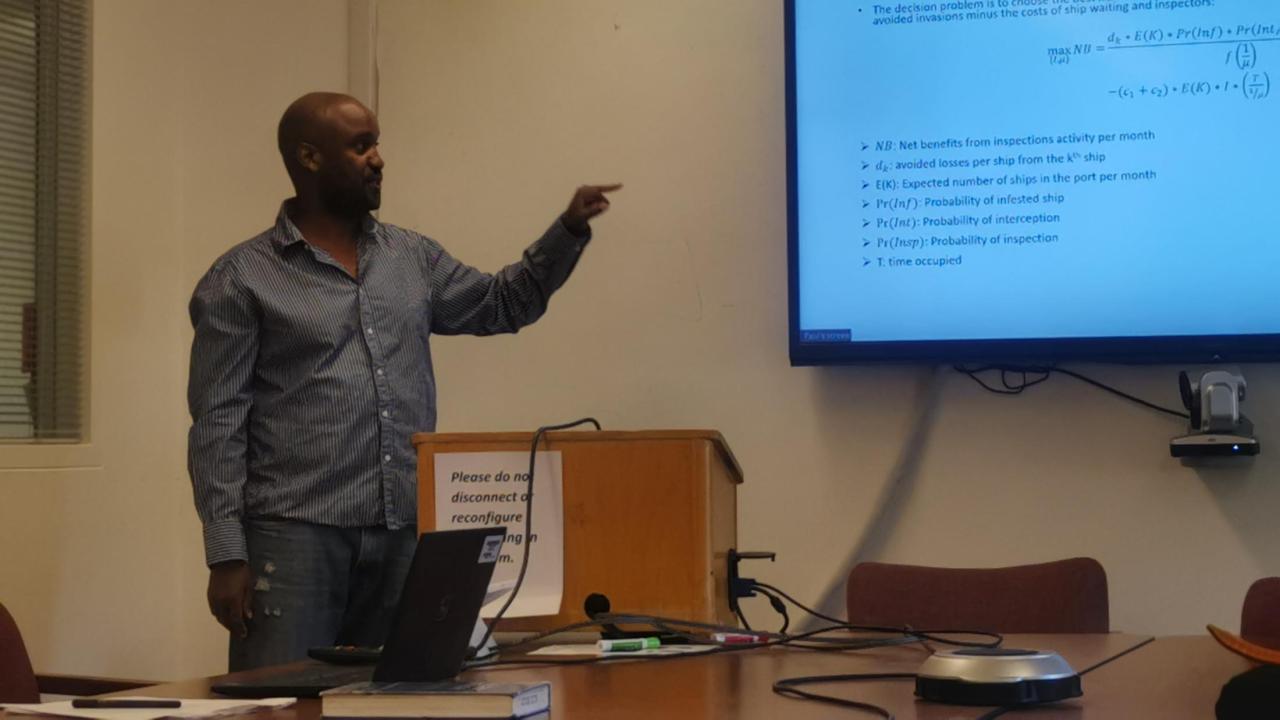
Lab Seminar - Application of queuing theory to biosecurity inspections in international shipping: a case study of the Asian gypsy moth in Australia
Paul Mwebaze presented his research on biosecurity inspections in Australia. This work is a collaboration with Michael Springborn. This International shipping is recognised as a major pathway for transporting invasive species between countries. Biosecurity inspections of incoming ships is one means for managing the risk of invasive species. However, the number of ships requiring inspections has increased significantly while there sources of the inspection agencies are limited. This paper applies queuing theory to determine the optimal allocation of inspection resources for high risk ships arriving in Australia. Paul and coauthors examine the question of how many ships to inspect and how many inspectors to deploy using theoretic and simulation queuing methods, focusing on the Asian gypsy moth (AGM) as a case study. Their approach offers two advancements to the literature. Firstly, they account for the invasion-reduction benefits of inspections while also focusing on minimising the combined costs of ship waiting time and inspector costs. Secondly, the paper adds an empirical focus to the problem of solving the optimal allocation of inspectors. The results suggest that more inspectors could be deployed to do inspections of high-risk AGM ships because inspection costs are smaller compared to potential waiting costs of low risk ships and current practice. The optimal number of inspectors (2-3) is about the same in the theoretical versus simulation analysis. The results show that even small changes in the inspection process can result in reduced costs. The results provide guidance for determining a suitable number of inspectors to deploy for high risk ships. Ultimately, the benefit will be to both the shipping industry and the general public paying for inspections to avoid suffering from invasions.